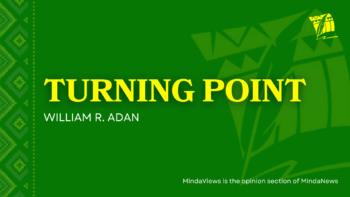GENERAL SANTOS CITY (MindaNews / 4 January) – The Bangsamoro Autonomous Region in Muslim Mindanao (BARMM) has approved a bigger budget of P79.86 billion for 2022, up 5.6 percent from its P75.6 billion spending power in 2021.
Bangsamoro interim Chief Minister Ahod Ebrahim certified as urgent the 2022 Bangsamoro Expenditure Program, which the Members of Parliament (MP) approved last week.
Data from the Bangsamoro Transition Authority’s (BTA) Legislative Technical Affairs and Information Services showed that the biggest slice of the budget was allocated for the Ministry of Basic, Higher, and Technical Education at P24.7 billion.
The Ministry of Public Works is next with P16.3 billion, then the Office of the Chief Minister with P8 billion.
Rounding up the top 10 agencies with the biggest budget allocations this year are the Ministry of Health with P4.6 billion; BTA with P3 billion; Ministry of Social Services and Development with P2.6 billion; Ministry of Agriculture, Fisheries and Agrarian Reform with P1.5 billion; Ministry of Interior and Local Government with P1.2 billion; Ministry of Human Settlement and Development with P814 million; and Ministry of Environment, Natural Resources and Energy with P642 million.
MP Ubaida Pacasem, who is also the deputy minister of Finance, Budget and Management, said the budget would be utilized to spur recovery initiatives from the COVID-19 economic recession.
The Bangsamoro government’s main source of revenue is the block grant, which is stipulated in Republic Act 11054 or the Bangsamoro Organic Law (BOL).
The annual block grant is automatically appropriated in the General Appropriations Act and released directly to the Bangsamoro government.
The amount is equal to five percent of the net national internal revenue tax collection of the Bureau of Internal Revenue and the Bureau of Customs in the third fiscal year preceding the current fiscal year.
The Bangsamoro government, which is seated in Cotabato City, is composed of at least 28 ministries and offices.
The Bangsamoro region was created in 2019 following the ratification of the BOL, which is anchored on the Comprehensive Agreement on the Bangsamoro (CAB). The region straddles the provinces of Maguindanao, Lanao del Sur, Basilan, Sulu and Tawi-Tawi, the cities of Marawi, Lamitan and Cotabato, and 63 villages from six towns in North Cotabato.
The CAB is the final peace agreement between the government and the Moro Islamic Liberation Front (MILF) signed in 2014 after 17 years of negotiations.
The BARMM is governed by the 80-member BTA, which is dominated by MILF nominees. The BTA’s mandate is until June 30, 2022.
The transition period in the BARMM, however, has been extended for three more years to 2025 due to the delays caused by the ongoing COVID-19 pandemic to the performance of the Bangsamoro government and in the implementation of the provisions of the peace agreement.
Under the Annex on Normalization of the CAB, the 40,000-strong MILF and their weapons need to be decommissioned as key milestones of the peace agreement are reached.
The decommissioning process is now in Phase 3 involving 14,000 MILF combatants, or 35 percent of the front’s members, and about 2,500 weapons. It kicked off last November and so far, at least 5,000 have been deactivated.
Part of the normalization process is also the transformation of MILF camps into peaceful and productive economic zones. (Bong S. Sarmiento / MindaNews)
